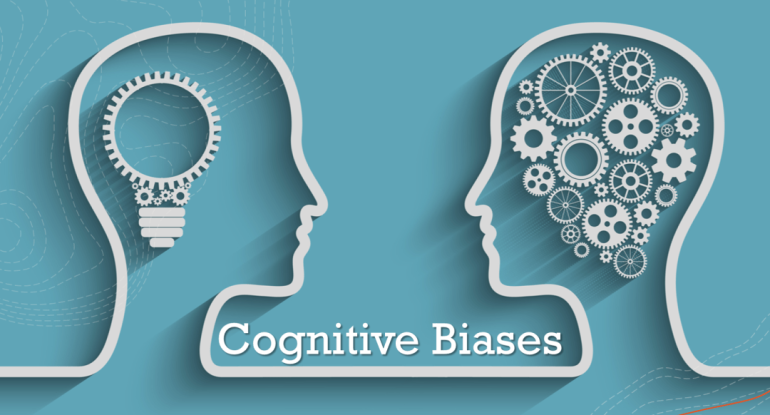Have you ever wondered why you make certain choices without even realizing it? It turns out that our decisions, whether big or small, are often influenced by cognitive biases. These biases can subtly distort our thinking and lead us astray without us even knowing. In this article, we will explore the fascinating world of cognitive biases – what they are, how they operate, and their impact on our daily choices. In the end, you’ll be one step closer to knowing how to write a case study psychology and ace your paper!
Understanding Cognitive Biases
To fully grasp the concept of cognitive biases, it is important to start with a clear definition. Cognitive biases, simply put, are systematic errors in thinking that affect our judgments and decision-making processes. These biases are often the result of our brain’s attempt to simplify information processing and make quick decisions.
But how exactly do cognitive biases influence our choices? They subtly shape our perception of reality and impact our ability to make rational decisions. By understanding these biases, we can become more aware of our own thought processes and make better-informed choices.
Moreover, cognitive biases are not limited to individual decision-making processes; they can also influence group dynamics and organizational behavior. In a group setting, biases such as groupthink can lead to flawed decision-making as individuals prioritize harmony and conformity over critical evaluation of options.
The Role of Cognitive Biases in Decision-Making
When it comes to decision-making, cognitive biases play a significant role. They can lead us to make decisions based on faulty logic, incomplete information, or emotional factors. These biases can cloud our judgment and prevent us from considering all relevant factors.
By recognizing the role of cognitive biases in decision-making, we can take steps to mitigate their impact and make more rational choices.
The Invisible Influence of Cognitive Biases
One of the most intriguing aspects of cognitive biases is their ability to operate unconsciously. These biases affect our thinking on a subconscious level, often without our awareness. Research has shown that cognitive biases operate in the background of our minds, influencing our thoughts and actions without us realizing it. These biases can be deeply ingrained in our thought patterns and can be challenging to identify.
Unconscious cognitive biases can lead us to favor certain options or ideas, even when presented with contrary evidence. They can also cause us to make decisions hastily without carefully considering all available information.
Also, the impact of cognitive biases on our daily choices cannot be overstated. From simple decisions like choosing what to eat for lunch to more significant choices like buying a house or making investment decisions, cognitive biases shape our behavior in ways we may not even realize.
Common Types of Cognitive Biases
There are numerous types of cognitive biases, each with its own unique effects on our decision-making process. Here are a few common examples:
Confirmation Bias and Its Effects
Confirmation bias is the tendency to search for, interpret, and remember information in a way that confirms our preexisting beliefs or hypotheses. This bias can lead us to ignore contradictory evidence and reinforce our existing beliefs, ultimately hindering our ability to consider alternative viewpoints.
The Dangers of Hindsight Bias
Hindsight bias refers to the inclination to perceive events as more predictable than they actually were before they occurred. This bias can lead us to oversimplify complex situations and underestimate the uncertainty involved, potentially leading to flawed decision-making.
Understanding the Anchoring Bias
The anchoring bias occurs when individuals rely too heavily on the first piece of information encountered when making decisions. This information, or “anchor,” can greatly influence subsequent judgments, often leading to biased outcomes.
Overcoming Cognitive Biases
While cognitive biases are deeply ingrained in our thinking patterns, there are techniques we can employ to identify and mitigate their effects.
Techniques for Identifying Cognitive Biases
One effective technique is being mindful of our thinking patterns and recognizing our own biases. By questioning our assumptions and seeking diverse perspectives, we can gain a more balanced and objective view of the situation.
Strategies for Mitigating the Impact of Cognitive Biases
Another approach is to engage in slow, deliberate thinking. Slowing down our decision-making process allows us to be more thorough in our evaluation of options and reduces the influence of biases.
By combining these strategies and being open to feedback, we can overcome cognitive biases and make more rational, informed decisions.
The Role of Cognitive Biases in Society
Cognitive biases not only affect individuals but also have a significant impact on society as a whole. Their influence can be observed in various facets of society, including politics, media, education, and the workplace.
Cognitive Biases in Politics and Media
Politics and media are fertile grounds for the operation of cognitive biases. From confirmation bias influencing our political beliefs to the anchoring bias affecting the way news is presented, cognitive biases can shape public opinion and sway electoral outcomes.
Cognitive Biases in Education and Workplace
In the realm of education, cognitive biases can impact the way we absorb information and form beliefs. Understanding these biases can help educators design more effective teaching strategies and empower students to think critically.
In the workplace, cognitive biases can affect decision-making, teamwork, and organizational culture. Recognizing and addressing these biases can lead to fairer, more objective decision-making and create a more inclusive and productive work environment.
Final Thoughts
In conclusion, cognitive biases are powerful forces that shape our choices without us even realizing it. Understanding these biases and their effects is crucial for making better decisions, both in our personal lives and within society. By being aware of our own biases, employing strategies to mitigate their impact, and fostering a more inclusive and objective culture, we can strive to make more informed and rational choices.











